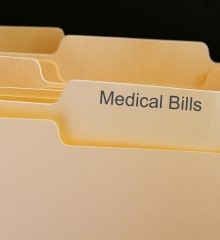Rent-to-Own Stores
Updated on 29 November 2023
Introduction

Rent-to-own stores let you buy new and used appliances, furniture and electronics under long-term payment plans. And they don't check your credit. So if you have poor credit, rent-to-own might look like a good idea — especially if something breaks or you need something that just can't wait. OK, what's so bad about paying a few dollars a week for a computer or a flat-screen TV?
The Problem with Rent-to-Own Stores
What's so bad is that by law, the stores can set their own prices. And if you take a moment and multiply out the payments before you sign the contract, you find prices that'll make your head spin. Prices like these.
High Prices and Predatory Lending
- A GE refrigerator that sells for $430 at Sears or $448 at Lowe's costs up to $1,700 when purchased over 24 months at Rentway.
- A Dell desktop computer, selling online for $559, costs nearly $3,500 when purchased over 21 months at Rent-A- Center.
- A 27-inch JVC television, selling for $215 on Amazon.com, costs nearly $1,000 over 15 months at Rentway.

The rent-to-own industry calls this filling a need in poor communities. I call it predatory lending. I call it other things, too, but I can't say them on the radio. By the way, if you ever miss a payment, the store repossesses the item and you lose every penny you've paid.
Case Study: Rent-to-Own and the Poor
One of our clients here at DebtStoppers is a 65-year-old lady who takes care of her three grandchildren. She had poor credit and no car. Last year, her dryer broke during a snowstorm. She couldn't wait for layaway at Sears. She also needed a computer for her granddaughter.
So she ended up at Rent-A-Center, agreeing to pay $184 a month for both over 20 months. That's $3,700 for items that together sold for less than $1,000 in regular retail stores. As far as I'm concerned, they stole $2,700 from a poor lady trying to make a good home for her grandkids. DebtStoppers was able to help this lady, but there are thousands of other folks out there who need to understand the real cost of rent-to-own.
Alternatives to Rent-to-Own
For $3,700, my client could have bought the dryer and the computer outright — and had enough left over to send one of her grandkids to college for a term. Instead, she dug herself deeper in debt.
So before you go to a rent-to-own store, ask yourself honestly whether or not you really need the item. Do the math and see just how much rent-to-own will cost. And always look at all your options:
- Wait and buy the item when you have saved enough money to pay cash.
- Try to buy the item through installments or layaway at a department or appliance store.
- Get a short-term consumer loan from a credit union or bank.
- Buy the item used from a garage sale, classified ad or second-hand store.
Rent-to-Own as a Last Resort
Go to a rent-to-own store only as a last resort.
People have to understand what rip-offs rent-to-own and payday loans are. Because if you're not in debt trouble now, these two scams can definitely put you there.
Understanding the Rent-to-Own Trap
Rent-to-own stores may seem like a convenient solution for individuals with poor credit, but the hidden costs associated with their services often lead to greater financial burdens. The high prices and predatory lending practices employed by these stores can trap unsuspecting consumers in a cycle of debt, making it difficult for them to regain financial stability.
How Rent-to-Own Stores Target Vulnerable Consumers
Rent-to-own stores often target low-income communities and individuals who lack access to traditional credit. By offering seemingly affordable weekly or monthly payments, they lure in customers who may not fully understand the long-term financial implications of entering into a rent-to-own contract. This lack of transparency and financial education can lead to consumers paying far more than the actual retail value of the items they are renting.
Breaking Free from the Rent-to-Own Cycle
To avoid falling prey to the rent-to-own trap, consumers should consider alternative options for obtaining the items they need. Some potential solutions include:
- Creating a budget and saving up for the item
- Exploring credit options through banks or credit unions
- Utilizing layaway programs at traditional retailers
- Purchasing used items from thrift stores, garage sales, or online marketplaces
By exploring these alternatives, consumers can make more informed decisions and avoid the financial pitfalls associated with rent-to-own stores.
Seeking Professional Help to Overcome Debt
If you find yourself struggling with debt due to rent-to-own contracts or other high-interest lending practices, it's important to seek professional help. Financial advisors and credit counselors can provide guidance and resources to help you regain control of your finances and work towards a more secure financial future. Don't let the allure of rent-to-own stores trap you in a cycle of debt – explore your options and make informed decisions to protect your financial well-being.
Call an office in your state today or contact us online.




